CentOS Statistics By Market Size, Customer, Usage And Facts (2025)
Updated · Sep 27, 2025
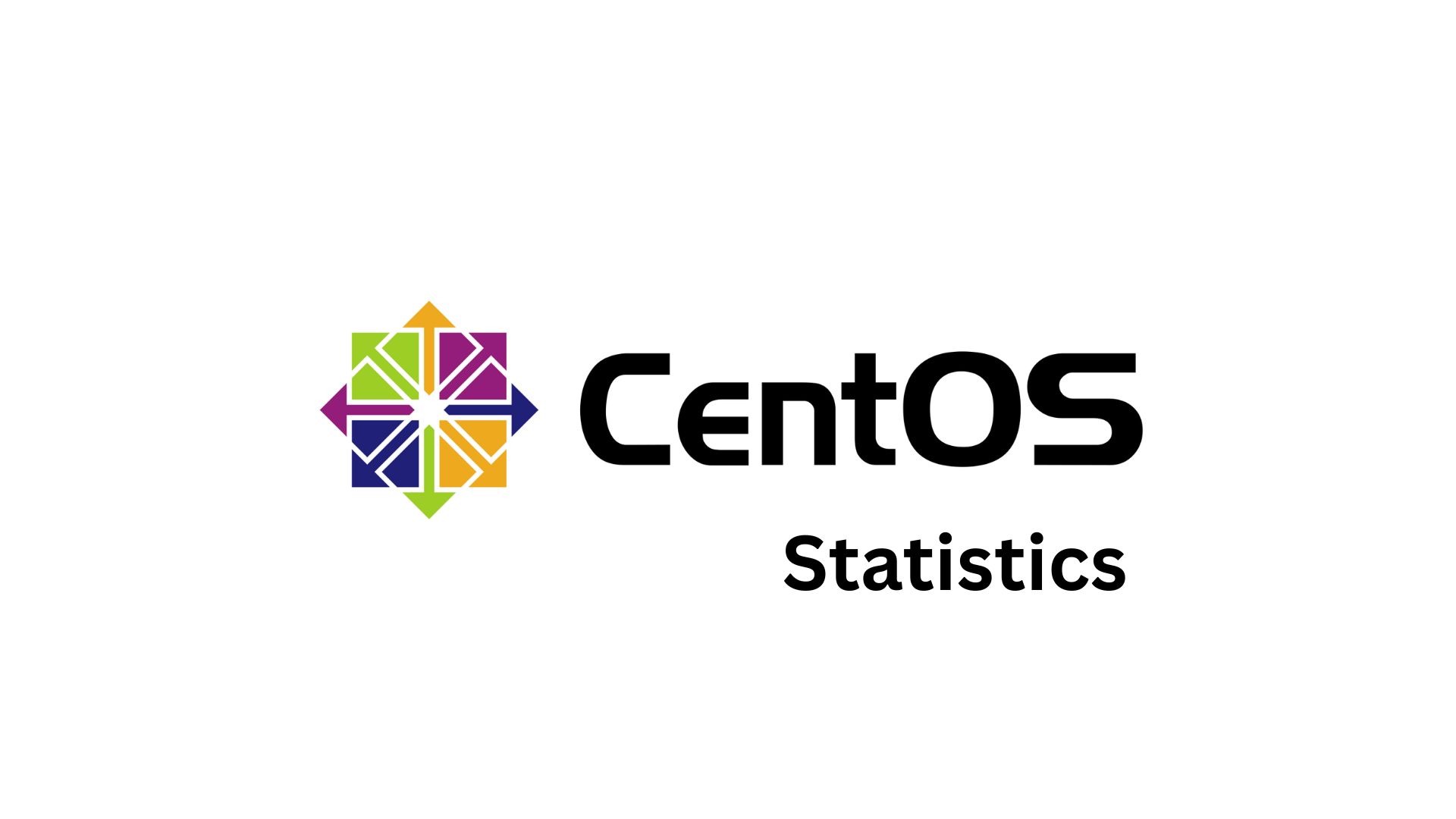
Table of Contents
- Introduction
- Editor’s Choice
- CentOS Market Analyses
- General Analyses of CentOS
- CentOS End of Life Timeline
- Companies Using CentOS Statistics
- CentOS Customers Statistics by Country
- Industry-Wise Distribution of CentOS Users
- CentOS Stream Overview
- CentOS Usage Statistics by Top Websites
- By Country
- By Industry
- Operating System Share in Supercomputers
- Top Linux Distributions Used on Cloud Server Analyses
- Subcategories of Linux Statistics by Market Share
- CentOS Infrastructure Update Analyses
- Website Usage Statistics of Linux vs. CentOS
- Conclusion
Introduction
CentOS Statistics: CentOS, short for Community Enterprise Operating System, was a discontinued Linux distribution. It provided a free, community-driven platform like RHEL, valued for reliability, upgrades, and managing demanding workloads. Over time, CentOShas built a strong community of developers, administrators, and companies that depend on it for hosting, data centres, and production systems. In recent years, the move to CentOS Stream has changed the way users and organisations work with it.
This article on CentOS statistics includes several statistical analyses and current trends from different insights that will highlight how it has evolved, the size of its user base, and the role it continues to play in powering critical computing environments worldwide.
Editor’s Choice
- According to 6sense, CentOS currently has an estimated market share of 2.75%, serving around 38,353 customers worldwide.
- In 2025, more than 38,238 companies worldwide adopted CentOS as their server and desktop OS.
- Based on the reports published by Their Stack, Capgemini is a well-known company that relies on CentOS and generates revenue of around USD 24 billion.
- CentOS has a global footprint, being used in 114 countries worldwide.
- CentOS is widely adopted across multiple industries, with the highest usage seen in Information Technology and Services, where 18,265 companies rely on it.
- Several popular websites run on CentOS, with realtor.com leading the list at 15.37% usage.
- According to Similarweb, the United States holds 25.64% of its CentOS users.
- The Adult industry contributes 11.34%, while News and Media Publishers make up 7.22% of its share.
- As reported by W3Techs on September 24, 2025, Linux powers 57.8% of all websites, and CentOS alone accounts for 1.1% of them.
- CentOS increased from less than 10% in 2019 to the impressive 57.42% in 2020.
CentOS Market Analyses
- According to 6sense, CentOS currently has an estimated market share of 2.75%, serving around 38,353 customers worldwide.
- This positions CentOS at 12th place in the global ranking among operating system distributions.
- CentOS faces strong competition from Oracle Linux (14.53%), Linux (14.51%), and Apple iOS (10.15%) in the server and desktop OS market.
- In 2025, more than 38,238 companies worldwide adopted CentOS as their server and desktop OS.
- The leading uses of CentOS include Software Development (691 users), Cloud Services (542 users), and Managed Services (530 users).
- Most CentOS server and desktop OS users are companies with 0 to 9 (8,655), 20 to 49 (7,287), and 100 to 249 (6,765) employees.
- CentOS is mainly used in the United States (11,472 users, 44.99%), followed by the United Kingdom (2,792, 10.95%) and Japan (1,975, 7.74%).
General Analyses of CentOS
- CentOS Linux was a free rebuild of Red Hat Enterprise Linux (RHEL), where updates from RHEL appeared in CentOS after a short delay.
- Fedora acted as the upstream testing ground, followed by RHEL, and then CentOS.
- With CentOS 8 released, many improvements were introduced, but its end of life was unexpectedly moved to December 2021.
- From 2019 onward, CentOS Stream became the only continuation, though less stable.
- CentOS 7 remains supported until 2024.
- All CentOS Linux versions reached their end of life (EOL) on June 30, 2024.
CentOS End of Life Timeline
| Version Names | Release Date | Community End of Life |
| CentOS 2 | May 2004 |
April 2009 |
|
CentOS 3 |
March 19, 2004 | October 31, 2010 |
| CentOS 4 | March 9, 2005 |
February 29, 2012 |
|
CentOS 5 |
April 12, 2007 | March 31, 2017 |
| CentOS 6 | July 10, 2011 |
November 30, 2020 |
|
CentOS 7 |
July 7, 2014 | June 30, 2024 |
| CentOS 8 | September 24, 2019 |
December 31, 2021 (earlier than planned 2029) |
Companies Using CentOS Statistics
- Based on the reports published by Their Stack, Capgemini is a well-known company that relies on CentOS for its operations based in France.
- In recent years, the company has generated revenue of around USD 24 billion.
- Besides, it has a workforce of 357K employees.
Other companies’ analyses are mentioned in the table below:
| Company | Revenue (USD) | Employees |
| Dice | – | 893 |
| Jacobs | 14 billion | 70K |
| Energy Jobline | 5.9 million | 128 |
| Grant Street Group | 33 million | 455 |
| Cloudlinux | 7.5 million | 150 |
| Radiant Digital | – | 250 |
| Kyndryl | 19 billion | 90K |
| Exabeam | 100 million | 929 |
| DomainTools | 16 million | 140 |
CentOS Customers Statistics by Country
- CentOS has a global footprint, being used in 114 countries worldwide.
- The United States leads adoption with around 4,600 companies, followed by France (933 companies) and the United Kingdom (929 companies).
- In Asia, India accounts for 483 companies, while in Europe, Germany (398) and Spain (349) show strong usage.
- Canada closely follows with 348 companies, whereas the Netherlands (189), Brazil (168), and Italy (163).
Industry-Wise Distribution of CentOS Users
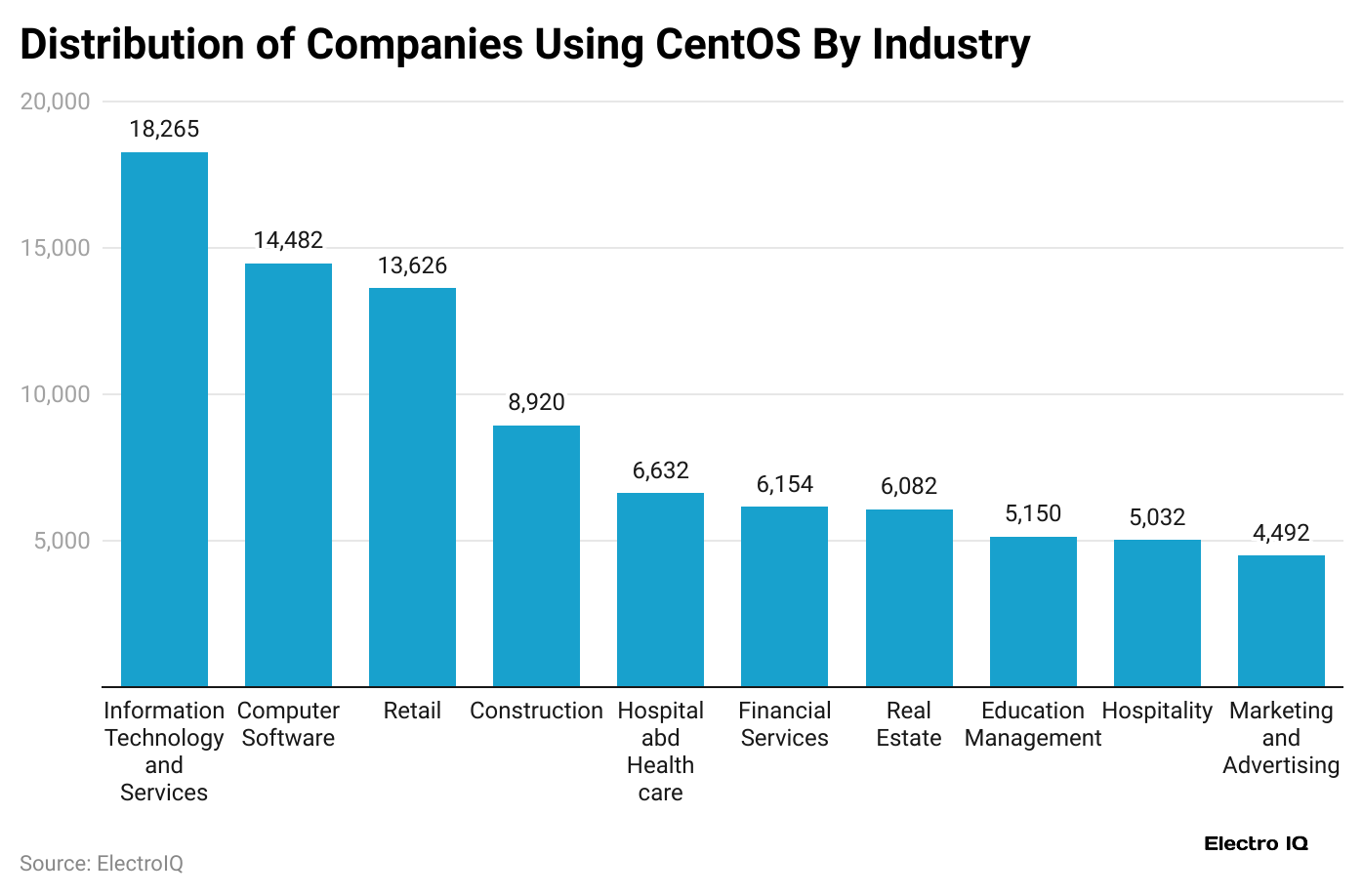
- CentOS is used by many industries worldwide, with the Information Technology and Services sector having the largest share at 18,265 companies.
- The Computer Software industry comes next with 14,482 companies, followed by the Retail sector with 13,626 companies.
- It is also adopted in Construction (8,920 companies), Hospital and Health Care (6,632), Financial Services (6,154), Real Estate (6,082), Education Management (5,150), Hospitality (5,032), and Marketing and Advertising (4,492).
CentOS Stream Overview
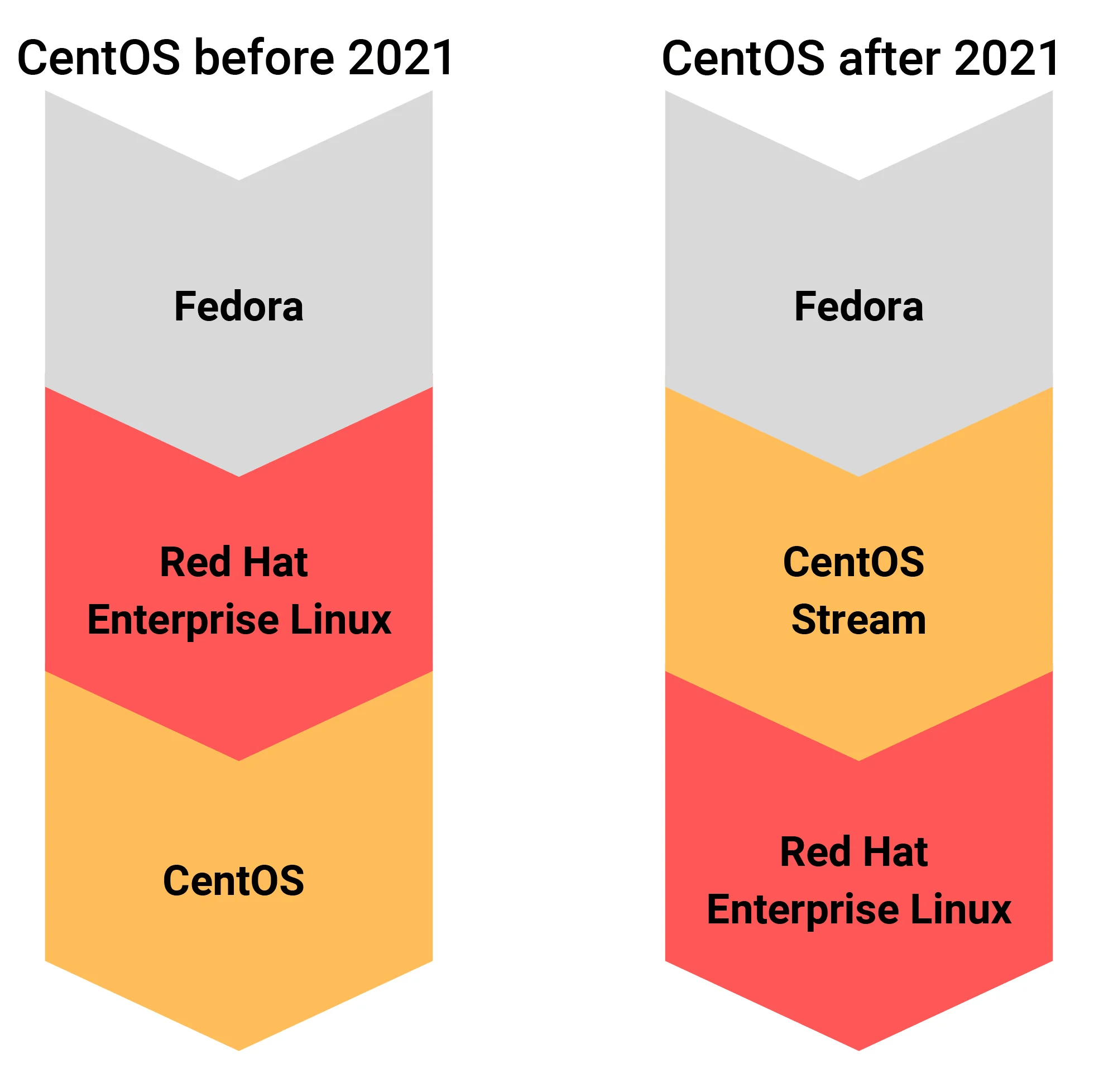
- CentOS Stream is a rolling release operating system designed to sit between Fedora and Red Hat Enterprise Linux (RHEL), offering users early access to new features and updates before they appear in RHEL.
- It is not a long-term release and does not provide the same compatibility or defined support period as RHEL, suitable for testing and pre-production environments rather than stable production use.
- Originally, CentOS was built as a direct RHEL rebuild under open-source licenses, but CentOS Stream now serves as a transitional step between Fedora’s innovations and RHEL’s fully tested production version.
CentOS Usage Statistics by Top Websites
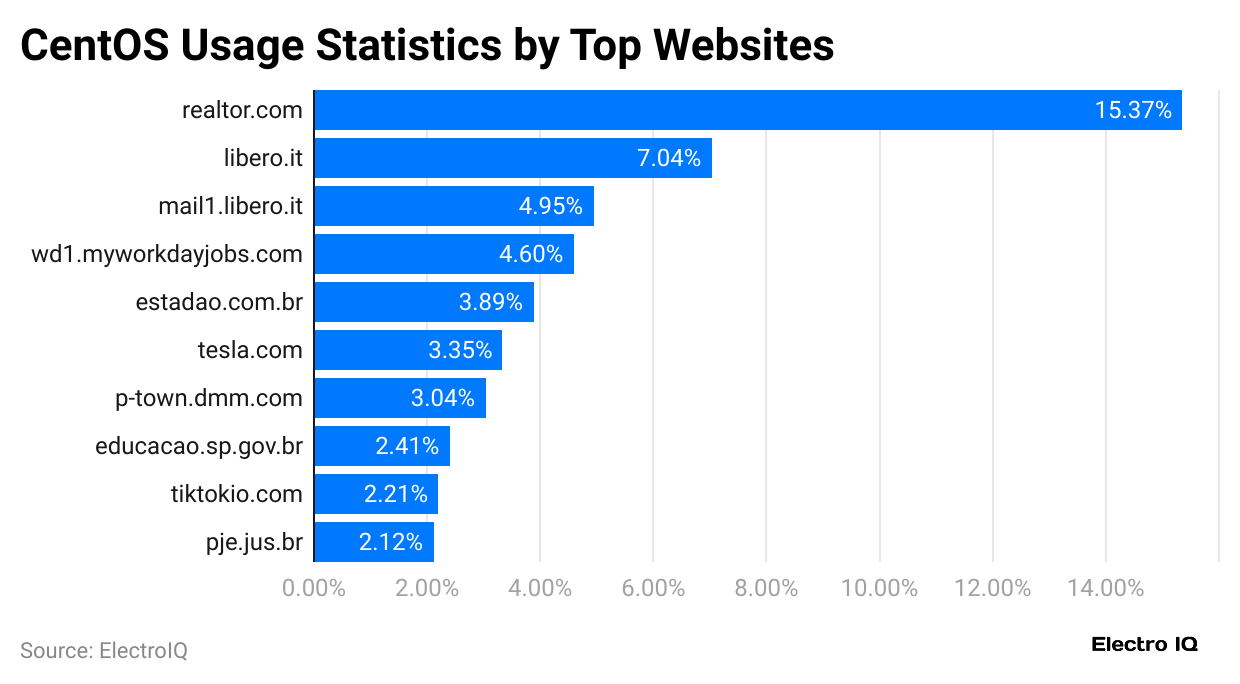
- Several popular websites run on CentOS, with realtor.com leading the list at 15.37% usage, followed by libero.it (7.04%) and mail.libero.it (4.95%), while wd1.myworkdayjobs.com accounts for 4.6%.
- Other notable platforms include estadao.com.br (3.89%), tesla.com (3.35%), p-town.dmm.com (3.04%), educacao.sp.gov.br (2.41%), tiktokio.com (2.21%), and pje.jus.br (2.12%).
By Country
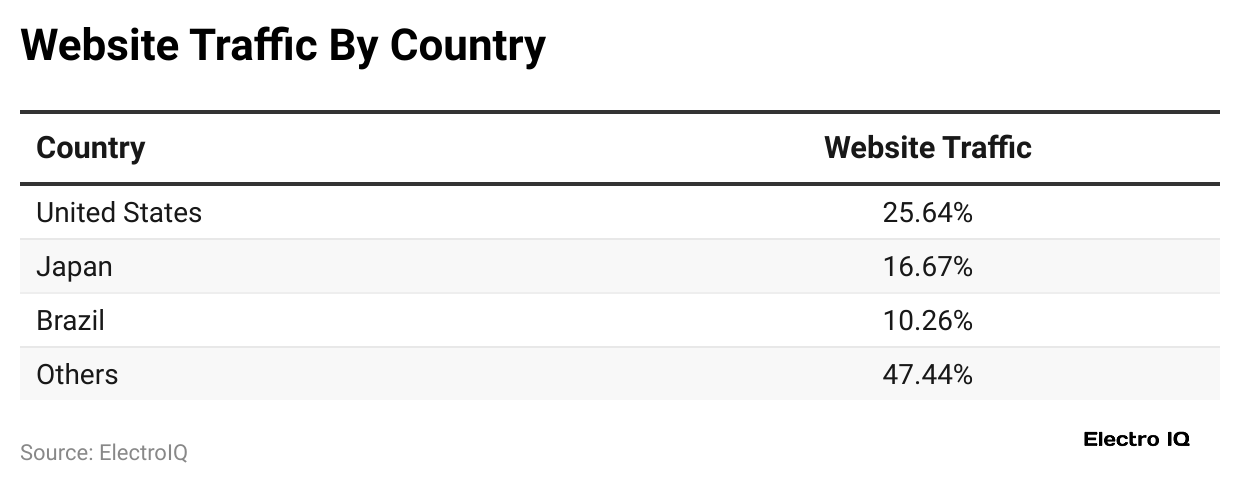
- According to Similarweb, CentOS remains popular globally, with the United States securing 25.64% of users.
- Meanwhile, other countries are followed by Japan with 16.67% and Brazil at 10.26%.
- The remaining 47.44% of usage comes from other countries, reflecting CentOS’s broad global adoption.
By Industry
- SimilarWeb data shows that 11.34% of CentOS usage comes from the Adult industry, while News and Media Publishers account for 7.22%.
- The Video Games Consoles and Accessories sector makes up 6.19%, and the largest share, 75.26%
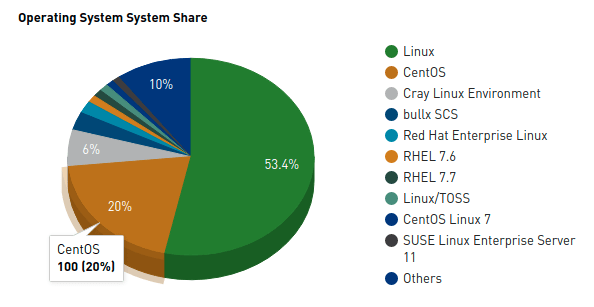
- According to TOP500.org statistics from November 2020, Linux dominated the supercomputing landscape, powering 53.4% of systems.
- CentOS followed as the second most widely used operating system, holding a 20% share with 100 systems.
- Other operating systems had smaller shares, including Cray Linux Environment (6%), Bullx SCS, Red Hat Enterprise Linux, RHEL 7.6, RHEL 7.7, Linux/TOSS, CentOS Linux 7, and SUSE Linux Enterprise Server 11, along with various others, which collectively made up the remaining portion.
Top Linux Distributions Used on Cloud Server Analyses
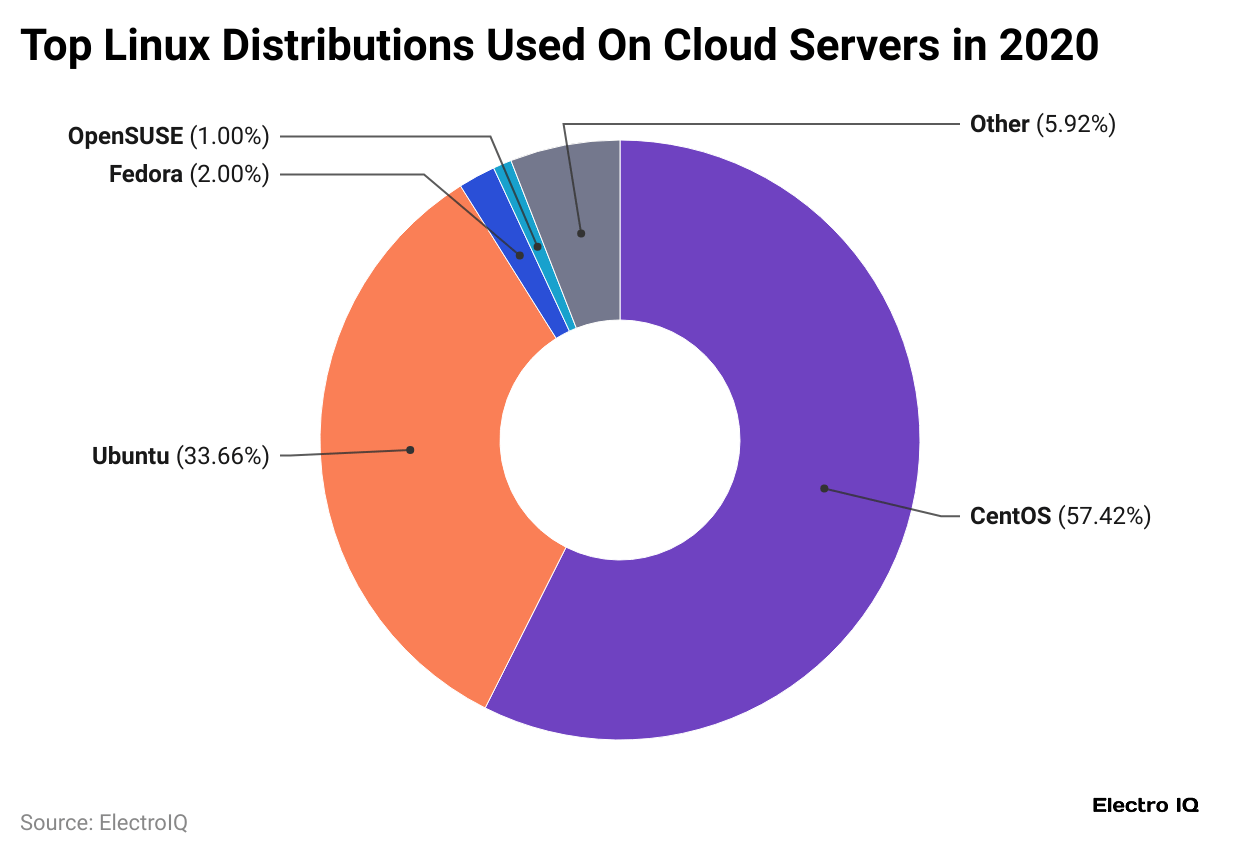
- CentOS increased from less than 10% in 2019 to the impressive 57.42% in 2020.
- As of 2020, Ubuntu has a drop in the ranking; it still takes 33.66% of the servers running, followed by Fedora (2%), and OpenSUSE (1%).
- The remaining 5.9% shares are segmented between various other distributions.
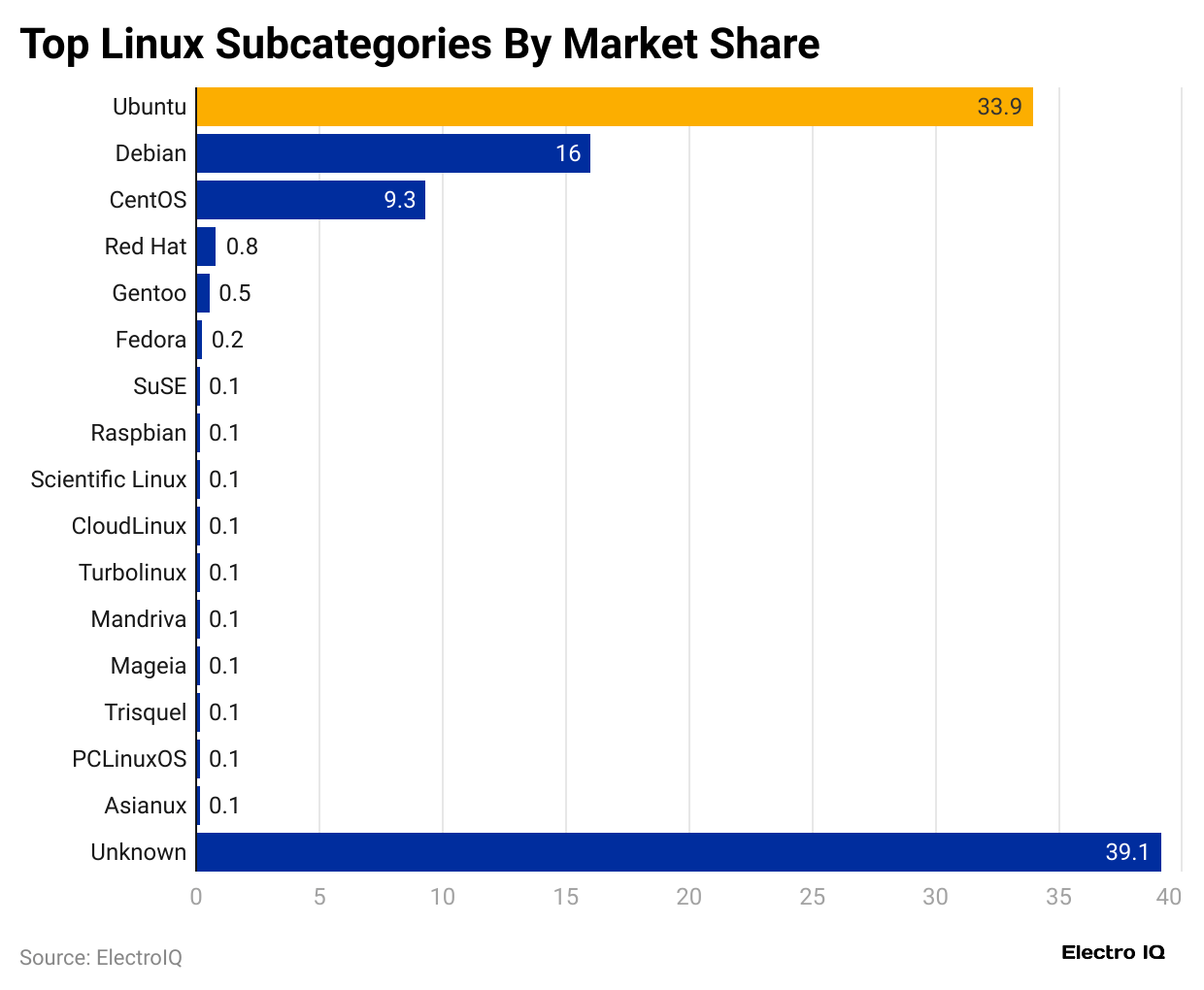
- Ubuntu is termed the leading Linux distribution with a market share of 33.9%.
- Meanwhile, Debian made up a share of 16%, followed by CentOS at 9.3%
- Furthermore, Red Hat Linux, Fedora, and SUSE together hold between 0.8% and 0.1% of the market.
CentOS Infrastructure Update Analyses
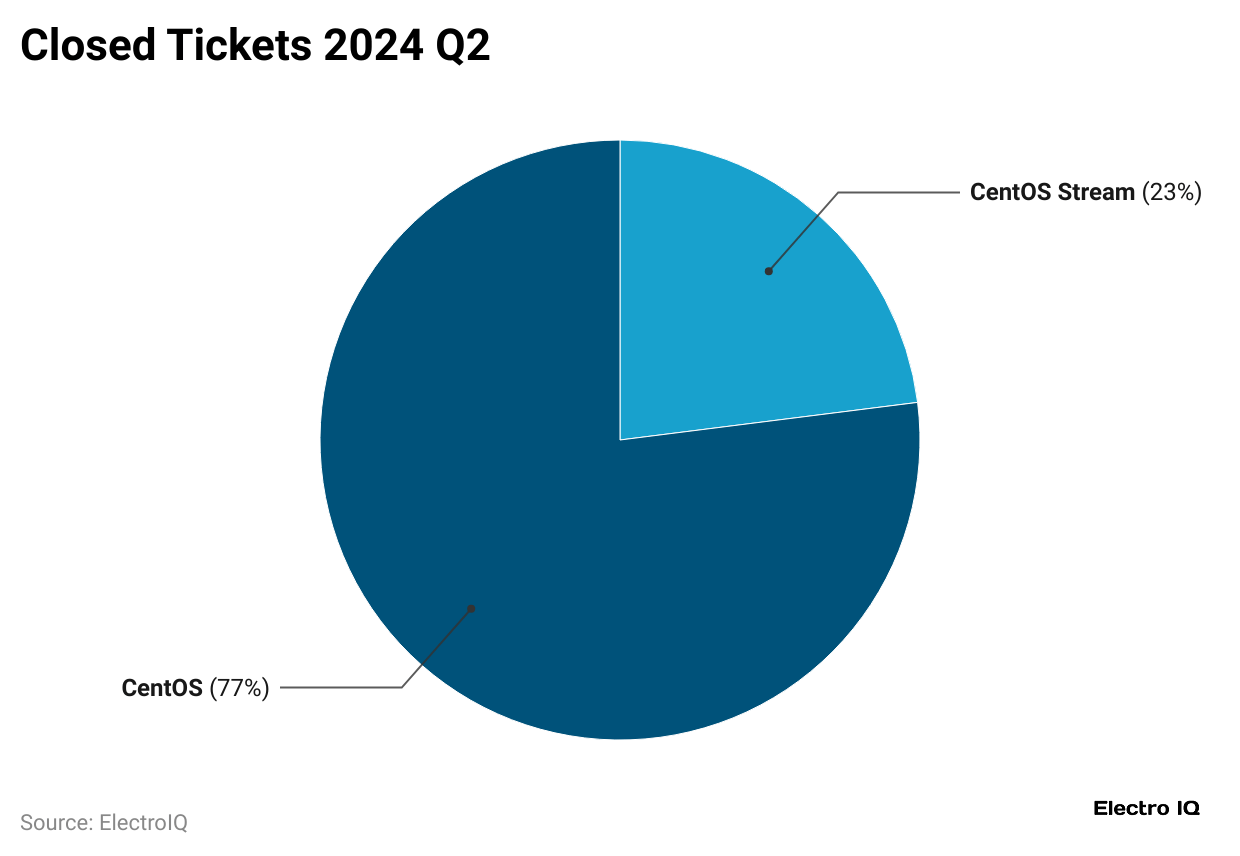
- In Q2 2024, a total of 74 tickets were resolved.
- Out of these, CentOS accounted for 57 tickets (77%), while CentOS Stream managed 17 tickets (23%).
- Koji was upgraded to version 1.34, making it possible to build Draft Builds, and the Jenkins imagestream was updated to point to the supported LTS version.
- Work also moved forward with enabling CentOS 10 Stream and adding support for CentOS package signing.
- Another major update was the official end of life for both CentOS 7 and CentOS 8 Stream.
- In addition, the team began migrating from Mailman2 to Mailman3 to improve package signing processes.
- Altogether, these steps show steady progress in strengthening and modernising the CentOS ecosystem.
Website Usage Statistics of Linux vs. CentOS

- As of September 24, 2025, Linux powers 57.8% of websites, while CentOS accounts for 1.1%, according to W3Techs.
- In the same duration, Linux powers 57.8% of all websites overall, dropping to 53.8% in the top 1,000,000 sites, 50.7% in the top 100,000, 47.0% in the top 10,000, and 45.0% in the top 1,000.
- CentOS is used by 1.1% of websites overall, 2.6% in the top 1,000,000, 2.9% in the top 100,000, 2.4% in the top 10,000, and 3.8% in the top 1,000.
Conclusion
CentOS played an important role in the open-source world by providing a free, stable, and enterprise-level Linux distribution. Its strong link with Red Hat Enterprise Linux made it a trusted option for servers, developers, and businesses across the globe.
With the move to CentOS Stream, user interest and adoption trends have started to change. After completing the article, it can be concluded that CentOS played a significant role, and recently, many users are also turning to other Linux options, reflecting a shift in preferences.
Sources
FAQ.
CentOS was discontinued because Red Hat shifted focus to CentOS Stream for future RHEL development.
Mostly used by developers, businesses, hosting providers, and organisations needing stable, reliable servers.
Alternatives to CentOS include AlmaLinux, Rocky Linux, and Oracle Linux, all offering free RHEL-compatible platforms.
No, it’s not ideal for beginners; it’s mainly designed for servers and enterprise environments.
CentOS Linux offered a stable RHEL rebuild, while CentOS Stream gives rolling previews of upcoming features.

Maitrayee Dey has a background in Electrical Engineering and has worked in various technical roles before transitioning to writing. Specializing in technology and Artificial Intelligence, she has served as an Academic Research Analyst and Freelance Writer, particularly focusing on education and healthcare in Australia. Maitrayee's lifelong passions for writing and painting led her to pursue a full-time writing career. She is also the creator of a cooking YouTube channel, where she shares her culinary adventures. At Smartphone Thoughts, Maitrayee brings her expertise in technology to provide in-depth smartphone reviews and app-related statistics, making complex topics easy to understand for all readers.










